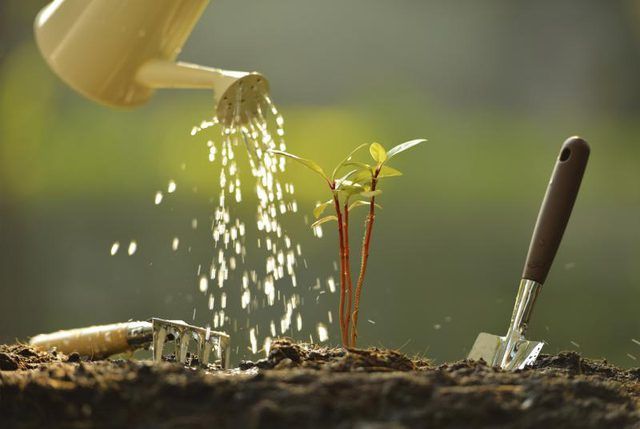Bulbs
Flower Basics
Flower Beds & Specialty Gardens
Flower Garden
Garden Furniture
Garden Gnomes
Garden Seeds
Garden Sheds
Garden Statues
Garden Tools & Supplies
Gardening Basics
Green & Organic
Groundcovers & Vines
Growing Annuals
Growing Basil
Growing Beans
Growing Berries
Growing Blueberries
Growing Cactus
Growing Corn
Growing Cotton
Growing Edibles
Growing Flowers
Growing Garlic
Growing Grapes
Growing Grass
Growing Herbs
Growing Jasmine
Growing Mint
Growing Mushrooms
Orchids
Growing Peanuts
Growing Perennials
Growing Plants
Growing Rosemary
Growing Roses
Growing Strawberries
Growing Sunflowers
Growing Thyme
Growing Tomatoes
Growing Tulips
Growing Vegetables
Herb Basics
Herb Garden
Indoor Growing
Landscaping Basics
Landscaping Patios
Landscaping Plants
Landscaping Shrubs
Landscaping Trees
Landscaping Walks & Pathways
Lawn Basics
Lawn Maintenance
Lawn Mowers
Lawn Ornaments
Lawn Planting
Lawn Tools
Outdoor Growing
Overall Landscape Planning
Pests, Weeds & Problems
Plant Basics
Rock Garden
Rose Garden
Shrubs
Soil
Specialty Gardens
Trees
Vegetable Garden
Yard Maintenance
How to Do Lasagna Gardening
How to Do Lasagna Gardening. Although it might sound like something you'd do in pursuit of that well-known Italian dish, lasagna gardening is less about what you grow and more about how you do it. The term "lasagna gardening" refers not to the tomatoes, garlic, basil and onions required for a pan of lasagna but instead to the layering of...

Although it might sound like something you'd do in pursuit of that well-known Italian dish, lasagna gardening is less about what you grow and more about how you do it. The term "lasagna gardening" refers not to the tomatoes, garlic, basil and onions required for a pan of lasagna but instead to the layering of materials. When you're installing a new garden, one big advantage is you won't have to dig into the soil to get the bed started.
Start Early
When you create a lasagna garden, you're essentially creating a compost pile on a garden site. Although it is possible to start planting in a lasagna garden right when you build it, gardeners tend to start early, creating their lasagna beds in the fall, for example, to be used the following spring. Fall is also an especially good time to start a lasagna bed because of the high number of fallen leaves available in temperate climate zones.
Base Layer
The first step is to lay down a base layer that will kill any grass or weeds growing in the bed area. The beds can be any size you choose, but a 4-foot bed will be wide enough to plant a multitude of veggies while being narrow enough for gardeners to reach into without disturbing plants, notes Penn State Extension. After mowing any grass in the area, lay a barrier of corrugated cardboard or newspaper -- between six and 10 sheets -- over the entire garden. Spray it with a hose to wet down the material and help it stay in place. If you're using cardboard, it also helps to walk on top of it once it's wet to further tamp it down.
Compost Layers
Now it's time to start adding the layers that give this type of gardening its name. Over the cardboard, add a 2- to 3-inch layer of high-nitrogen material such as compost, manure, kitchen scraps, coffee grounds or worm castings. On top of that, add a layer of carbon-rich material, such as straw, grass clippings or leaves, about 4 to 6 inches thick. Add a second layer of several inches of nitrogen material and then another layer of carbon. Keep adding layers until you run out of material, keeping in mind that the carbon layers will tamp down quickly and make the garden bed much lower than it might be at first. As a general rule, the pile should be between 18 inches and 3 feet, suggests Penn State Extension.
Finish It Off
If you're leaving the beds to "cook down" for the fall and winter before planting, lay a sheet of black plastic over the entire thing and place rocks or lumber near the edges to hold the plastic in place. When you remove the plastic in the spring, you'll have rich layers of finished material ready for planting. It's also OK to plant directly into any beds you've made in the spring, though all the nutrients in the soil won't be broken down into available plant food right away. In that case, add a few inches of finished compost or soil as the top layer, recommends the University of Florida IFAS Extension. Seeds can be planted as normal, at the depth recommended on the seed packet, but if you're planting starts that are larger, such as a quart or 1/2 gallon size, use a knife to cut an "X" into the cardboard at the bottom of the garden. This will allow those larger plants' roots to dig deep into the soil below. After planting, continue to add layers of carbon and nitrogen every few weeks or months throughout the growing season.